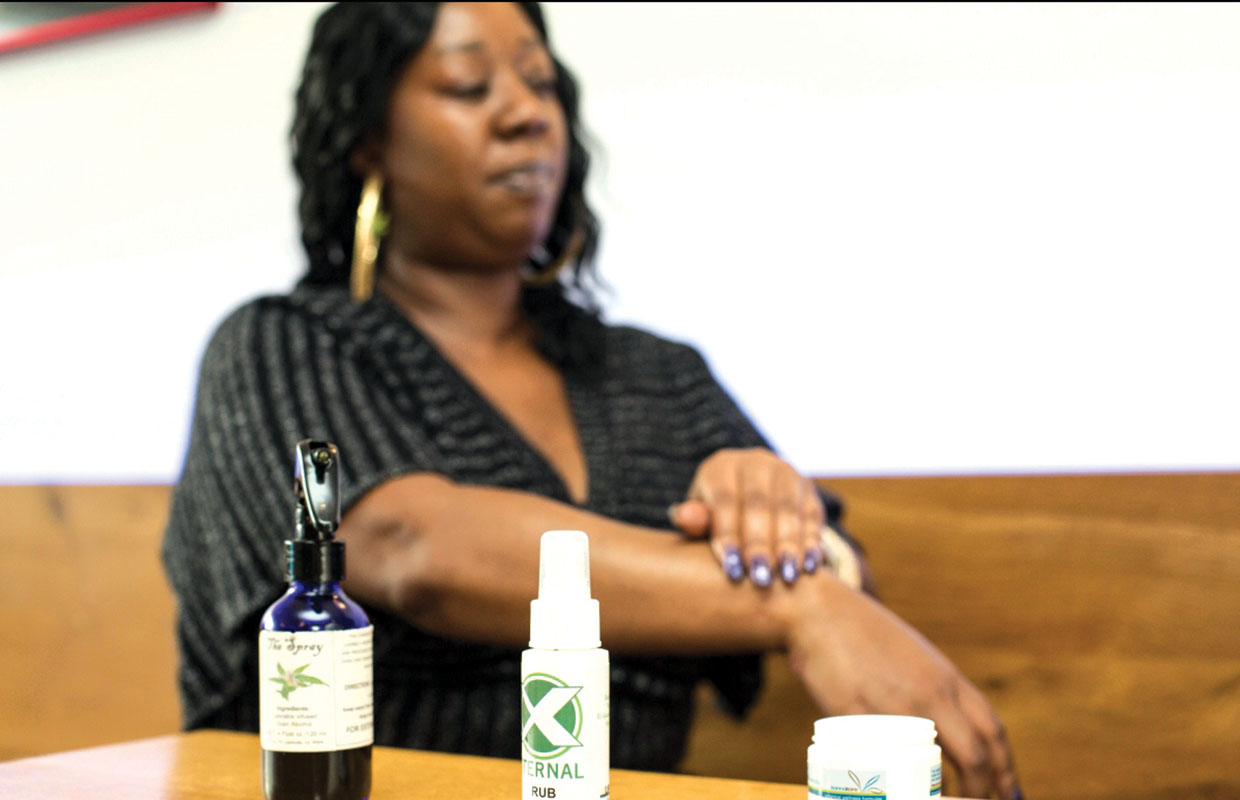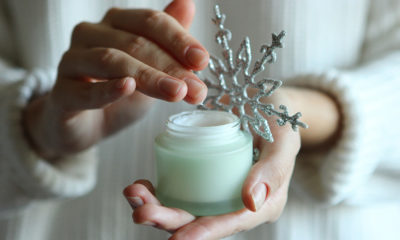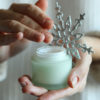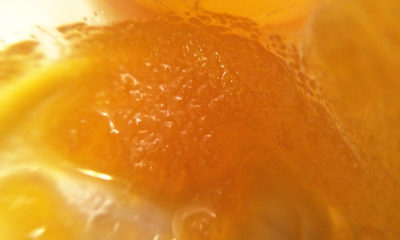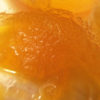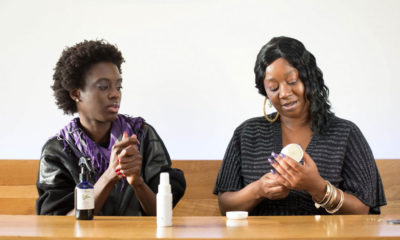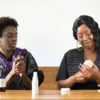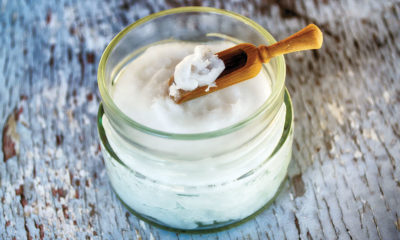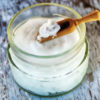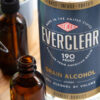Marijuana Salves, Oils & Topicals for Healthier Skin
There are many ways to use cannabis topicals.
Herbs have been used to treat skin problems for thousands of years. Five thousand years ago, Ayurvedic practitioners used marijuana preparations. Cannabis-enriched lotions, salves, and other topically applied products are still used today. Marijuana’s active ingredients — cannabinoids and terpenoid essential oils — are absorbed through the skin for direct therapeutic effect.
People’s lives have been changed using marijuana topicals, including those who have been able to stop taking opiate narcotics for pain, grandparents with severe arthritis who have been able to hold their grandkids for the first time and musicians who are able to use their fingers again.
An increasing variety of topical ointments, salves and other marijuana-infused topical preparations are available in dispensaries. Select products that use the highest quality ingredients, as your skin will absorb the bad as readily as the good. Not all states require complete labeling on cannabis products, so do some research. Stay away from products that contain parabens (used as preservatives) or petroleum-based chemicals (some artificial fragrances), as these can cause a host of other health problems.
Making your own topical is a bit more involved than making canna-butter or a tasty batch of magic brownies, but it doesn’t have to be. It’s simple to make a poultice.
As with all things marijuana, the quality of your final product and its effects is largely determined by the quality of the materials you start with. Many people use nothing but trim and other material that would otherwise be discarded. To produce the finest grade, start with bud. The variety of marijuana used influences its topical effects, because of variation in the cannabinoid and terpene profiles.
Poultices
Poultices are the simplest topicals to make. They have been used for thousands of years. There are three methods of preparation: with fresh marijuana leaves, with leaves soaked in alcohol or mixing dried powder with alcohol, glycerin, oil, or water.
India’s Ayurvedic medical tradition uses hemp poultices made by boiling the leaves. Sometimes roots are used as well. Boiled poultices are used to treat bacterial skin infections and inflammation, including hemorrhoids. In India, marijuana poultices made from bruised fresh leaves were a common household remedy for conjunctivitis, swollen joints, inflammation of the testes and other acute inflammatory conditions, sores and open wounds. Hemp root has also been used traditionally to make poultices.
The most basic poultice method is to crush freshly harvested fan leaves using a mortar and pestle or blender, turning them into a juicy pulp. Spread the crushed leaf paste on the area to be treated. You can roll fresh leaves between your hands to bruise them, which releases the juice and oils. Carboxylated cannabinoids (THCA, CBDA, etc.), still in their acid form in unheated, untreated marijuana leaves, may have different therapeutic properties than the heated, decarboxylated leaves and are superior for some uses. Use fresh leaf poultices immediately, as they have a very short shelf life unless refrigerated or frozen.
Adding alcohol to fresh marijuana poultices strips cannabinoids and essential oils from the marijuana leaves and opens the pores of the skin. Both increase the absorption of healing chemicals. Making this poultice simply entails soaking raw marijuana fan leaves in alcohol. A mortar and pestle or blender macerates the blend and increases the amount of medicine dissolved in the alcohol. The longer the leaves soak, the better. An alcohol-based marijuana poultice can be stored for weeks or months in the refrigerator. The alcohol helps preserve it. Isopropyl alcohol, which is a poison, can be used since the poultice is for external use. However, using ethyl alcohol or high-proof drinking alcohol prevents accidents.
Dried and cured trim or bud are excellent ingredients. They contain more decarboxylated THC and CBD. Grind to a fine powder, then mix thoroughly with either alcohol, glycerin, or oil, or a mix of these ingredients. Alcohol, glycerin and oil all combine with the oil-based cannabinoids and terpenes to penetrate the skin.
Glycerin or oil dissolve the active ingredients when they are warm. Heat the mixture keeping the temperature below 150˚F (66˚C) for 20 minutes. Olive and coconut oils and glycerin work well, but you can infuse your favorite massage oil. Don’t heat alcohol without taking precautions because its fumes are dangerous to breathe and they can explode. Alcohol evaporates quickly with a very low heat. For safety, heat alcohol only over an enclosed electric heater, in a double boiler or under very low heat in a well-ventilated space or outdoors.
Cannabinoids and essential oils do not mix with water, but you can make a paste of marijuana powder and water that can be applied to the skin. Add dry lecithin granules to help the oils and water mix.
Salves and Oils
You can enhance a salve or massage oil by adding tincture to it. Start with a ratio of about 1:10 — that is, 1 ounce of marijuana extract to 10 ounces of topical.
Cooking oils made with marijuana can be used topically. Use skin-friendly oils such as almond, cocoa butter, coconut or olive oil. You can make a balm by combining cannabis oil with aloe vera. Add melted beeswax to the mixture. As it cools it helps thicken the salve.
Use dried leaf trim and root to make an infusion by chopping them in a food processor or blender. Soak in a skin-friendly oil for a few weeks, then strain using a fine mesh or cheesecloth or both. To speed up the process, use a blender to mix the ingredients, then apply low heat for at least 20 minutes to an hour, then strain. If using heat, keep the temperature below 150˚F (66˚C); a double-boiler is a good stove top tool for managing temperature.
Strain the oil, then mix in softened beeswax, coconut oil, or cocoa butter to thicken the mixture to a salve or lotion consistency. Use mild heat to melt and mix the ingredients, but be careful not to overheat beyond 150˚F (66˚C). Add beeswax sparingly — too much over-hardens the balm. It can be difficult to judge the thickness while heated, so pull a teaspoon of the mixture and pop it in the freezer for two minutes. If it is still liquid or too soft, add more beeswax. Once you’ve achieved the desired consistency, remove from heat. Continue stirring the mixture as it cools until it gets to about 90˚F–100˚F (32˚C –38˚C). Pour into glass containers for storage before it cools completely.
You can make marijuana massage bars that melt as you rub them on your skin by adding beeswax so that it constitutes about 25 percent of the mix. Before it cools completely, pour it into a baking pan or molds. If you are using a pan, place it in the refrigerator for a couple of hours. Once it’s chilled, cut into squares of the desired sized. Store the bars in a cool, dark place.
Topical Tinctures
Tinctures can be used topically. When used for specific local pain or as part of a treatment for skin cancer, highly concentrated tincture is best. Once a tincture is made, it is ready for topical use. A non-colored and non-flavored alcohol (ethanol) is best for making a tincture for topical use. Glycerin can be used alone for topicals or mixed with aloe, beeswax, alcohol and water. Place the topical on a bandage. Alcohol can dry the skin and should not be used on cracked skin or open wounds as it will create an intense burning sensation.
Tinctures that have been reduced to pure, concentrated cannabis oil are used to treat tumors related to skin and other cancers, as popularized by Rick Simpson and others. Cannabinoids have been shown in many preclinical research studies to reduce cancer tumors by selectively cutting off the blood flow to tumors, reprogramming cancerous cells to die off naturally and stopping the spread to other cells. The cannabis oil can be used as is by applying directly to the skin and massaging in to help it absorb and then covering with a dressing. Pure cannabis oil can also be combined with other oils, salves, or butters for topical application, but for cancer treatment the advice is generally to use the strongest concentration possible so the cannabinoids can do their tumor-fighting work.
The differences between purified extracts of marijuana, whether tinctures, oils or waxes, depend more on the marijuana you start with than the method for producing them. Some processes are easier and require less equipment than others and care must be used with any method that involves combustible solvents. Alcohol is a preferred solvent because it is easy to obtain, relatively safe to work with and any residual alcohol left in an extract does not pose health risks. Working with butane, naphtha and other petroleum-based solvents requires more caution and care must be exercised to ensure that none of the toxic chemicals used remain in the final product. Purging those solvents 100 percent requires some technical ability and experience.
This is an excerpt from Ed Rosenthal’s book “Beyond Buds” — the first to cover the shift from smoking buds to vaping and dabbing concentrates such as shatter, wax, budder and oil. It’s a DIY guide to making butane and CO2 extracts, as well as kief, hash, tinctures, topicals and edibles. The collection features full-color photos of award-winning concentrates and suggestions for products suited to accommodate a range of skill levels.
Originally published in Issue 15 of Cannabis Now. LEARN MORE
TELL US, have you ever used a cannabis topical?



